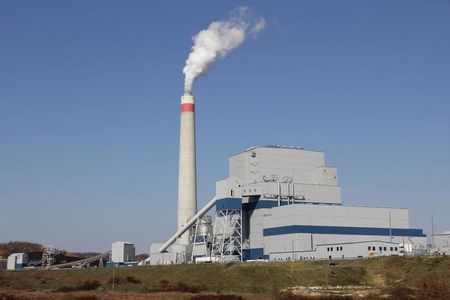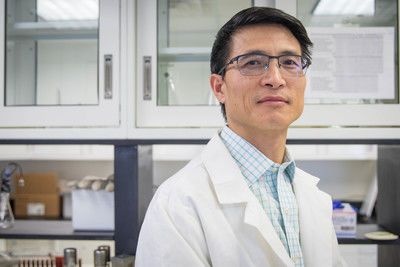
WVU and other partners are researching new method to make baking soda out of the carbon dioxide from power plant. Longview Power, seen here, is a project partner. Submitted photo.
by Conor Griffith, staff writer, WVNews. Original story on the WVNews website.
MORGANTOWN, W.Va. — After being named the new interim director of the WVU Energy Institute, James F. Wood said there are plenty of related research projects in which the center aims to take part.
The previous director, Brian Anderson, had been involved with the institute since its inception in 2014. He was recently named director of the U.S. Department of Energy’s National Energy Technology Laboratory. Wood, a long-time energy executive and the current director of the WVU-managed U.S.-China Clean Energy Research Center, replaced him.
James Wood, interim Energy Institute director
“What I was doing before this and what I continue to do at WVU is clean energy research,” he said.
“There are some key things we want to accomplish with the Energy Institute. The overarching theme in our portfolio is to try and commercialize technologies that are in a pilot stage or pre-pilot stage that have good (intellectual properties) that look like they can be healthy in the marketplace.”
Among the newer research projects being led by WVU in collaboration with NETL, Longview Power and the University of Pittsburgh is the conversion of carbon dioxide from power plant flue gas into commercial-quality sodium bicarbonate (baking soda). The goal: reduce the cost of carbon capture technology.

Bingyun Li is leading a team of researchers working to convert carbon dioxide from power plant flue gas into commercial-quality sodium bicarbonate (baking soda).
This will be a cross-discipline effort with WVU orthopedics professor and nano materials scientist Bingyun Li leading the project. His preliminary studies revealed two amino acids, glycine and alanine, that have the ability to capture and convert carbon dioxide into bicarbonate nanofibers. Li said this patent-pending process not only works faster and absorbs three times more carbon dioxide than the current leading post-combustion carbon capture technology, but is also safe for the environment because amino acids themselves are the building blocks of proteins in living things.
“The release of carbon dioxide from power plants impacts our daily life and also the coal industry,” he said. “The WVU technology is simple with the potential to generate a useful byproduct right at the power plant site. We may also explore some new markets for the nano-baking soda we convert from the carbon dioxide.”
Li will work alongside University of Pittsburgh chemical engineering professor Badie Morsi, who will develop a commercial-scale system based on the process while Davis College of Agriculture, Natural Resources and Design professor Jingxin Wang will evaluate the process’s costs. Longview Power will assist with creating a technology-to-market strategy.

Development of commercial technology to extract rare earth elements is another objective of the WVU Energy Institute. Photo by Conor Griffith.
Researchers previously developed methods to extract rare earth elements from coal sludge. Wood said the Energy Institute now looks to develop technology that would allow for commercialization.
Wood noted that China controls most of the world market for these elements, which are necessary to build computers, cell phones, rockets and more. Developing a domestic supply would shield the United States from any disruptions that might occur on the global market, and the country’s coal mines might have the answer. It’s just a matter of developing practical ways to get to it.
“They’re there for the taking if you have the technology to extract it,” he said.
Wood said another project being pursued is the development of more resilient technology for photovoltaic technology on solar power panels. It would enable them to make the most of sunlight exposure and negate some of the downside of solar energy’s cyclical nature.
He said that increased use of liquid natural gas and other ways to employ the byproducts of drilling and well operations are also being explored.
-EI-